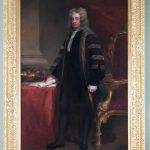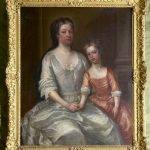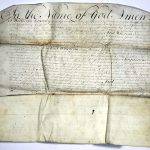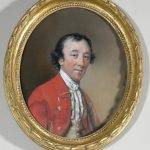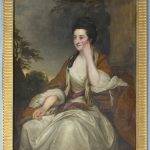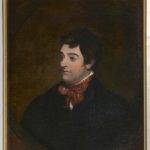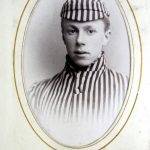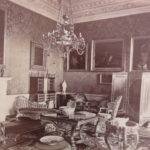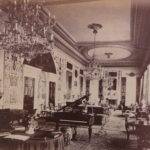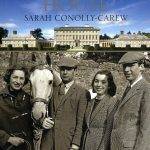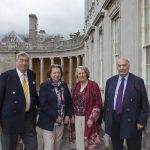William Conolly was born in Ballyshannon, Co. Donegal, in 1662, the son of a local innkeeper.
From such humble origins, he rose to become the wealthiest and most powerful politician in Ireland. The Conolly family were presumably of Catholic Irish background, although it is likely they had converted sometime before William’s birth. He trained as an attorney in Dublin, where he practiced law in the 1680s. His career, however, only took off following the Williamite war of 1688-91. In 1689, Catholic James II of England fled to Ireland following the ‘glorious revolution’ which swept his son-in-law William of Orange to power in Britain and Ireland. King William pursued his rival to Ireland, where decisive battles were fought at Derry, the Boyne, Aughrim and Limerick in 1690-1. Conolly proceeded to make the most of the opportunities created by the Williamite victory in Ireland. William of Orange confiscated the lands of James’s Catholic supporters and it was through dealing in these forfeited estates that Conolly established his fortune. By 1703, he had spent over £10,000, acquiring over 15,000 acres spread across seven counties. By any standards he had amassed an immense fortune in a remarkably short period of time.
Part of Conolly’s success, however, was based on the advantages of a successful marriage.
In 1694, he had married Katherine Conyngham, the daughter of a Williamite hero, Sir Albert Conyngham. Like Conolly she was from Donegal. She was of higher social status and his marriage allied Conolly with many of the leading families in Ulster. In addition to her connections and strong personality, she brought a marriage portion of £2,300, which Conolly promptly invested in forfeited land. At the same time that Conolly was increasing his private wealth and status, he was emerging as an important public figure. In 1692 he was elected to the Irish Parliament for the town of Donegal. He would remain a member of the Irish House of Commons until 1729. In 1715, upon the accession of King George I, he was appointed Speaker of the House of Commons. His role was not to be impartial, but to act as the chief government representative in the Commons. His growing political influence was rewarded in 1717 when he was appointed one of three Lord Justices who would run the country in the absence of the Viceroy. At a time when Sir Robert Walpole was establishing himself as the first Prime Minister in England, Conolly was doing something similar in Ireland.
By the time of his death he owned over 100,000 acres and enjoyed an annual income of almost £17,000 a year, making him the wealthiest and the most powerful politician in Ireland. Castletown would become the symbol of his great wealth.
Conolly’s greatest misfortune was perhaps his failure to produce an heir.
This lack of an heir meant that upon his death in October 1729, his estates and fortune were divided between his widow Katherine and his nephew William James Conolly, the son of his younger brother Patrick. In 1734, William Conolly junior married Lady Anne Wentworth, the daughter of the Earl of Strafford, and they lived in Leixlip Castle until the death of Katherine in 1752. Unfortunately, William James died two years later and was succeeded by his son Thomas (1738–1803), who settled Castletown in 1759 with his young wife, Lady Louisa Lennox (1743–1821).
- William Conolly, by Stephen Catterson Smith the Elder. Davison and Associates. OPW
- Mrs Katherine Conolly with Miss Molly Burton, by Charles Jervas. Davison and Associates. OPW.
- Probate of the will of William Connolly, 14 December 1730. Davison and Associates. OPW.
Castletown flourished under Thomas Conolly and Lady Louisa.
Lady Louisa, the third of the famous daughters of the Duke of Richmond, had spent much of her childhood at Carton near Maynooth, the home of her sister Emily, Countess of Kildare and later Duchess of Leinster. Her elder sister Caroline married the leading English politician Henry Fox, while her younger sister Sarah led a turbulent private life before eventually settling down in Oakley Park in Celbridge in 1781.
Lady Louisa had no children and instead devoted much of her energies to improvements to the house and demesne at Castletown. The Staircase Hall, Dining Room, Print Room and Long Gallery are amongst the rooms that can be considered symbols of her contribution to the house. Castletown in these years again became a lively, hospitable place with a constant stream of visitors including everybody from the Lord Lieutenant to London actress Sarah Siddons.
Thomas Conolly was the quintessential Irish gentleman, a keen huntsman and a fine horseman, as well as a politician and landowner. Regarded as the wealthiest commoner in the kingdom, he actually spent much of his career in debt because of large debts he inherited from his father. Although a patriot in the broadest sense of the word, Conolly was a strong supporter of the Act of Union in 1800. This support for the Union, which extinguished the independent Irish Parliament in College Green, was partly influenced by the 1798 rebellion which had a profound effect on the extended Conolly/FitzGerald family. At Castletown twelve servants and footmen were dismissed for involvement in the rebellion. At the same time, the Conollys grieved over the death of Lady Louisa’s favourite nephew, the United Irishman leader Lord Edward Fitzgerald. She was amongst the last people to see him before his death in Newgate gaol in May 1798.
Following Thomas’s death in 1803, Lady Louisa changed her lifestyle and devoted the remaining years of her life to charitable works instead of improvements to the house and estate. Amongst her achievements was the establishment of a school inside the gates of Castletown. A new Protestant church was also erected inside the gates to replace the previous church, which had been destroyed in the 1798 rebellion. She survived her husband by eighteen years and died in August 1821.
Lady Louisa’s death in 1821 ended an era at Castletown.
The Conolly estates, including Castletown, were inherited by Thomas Conolly’s grandnephew Edward Pakenham (1786–1848). Under the terms of Conolly’s will, Edward was required to change his name to Conolly. Thomas Conolly had also hoped and recommended that his heirs “will be resident in Ireland as their ancestor, Mr Speaker Conolly, the original and honest maker of my fortune, was.” The estates Edward Conolly inherited were heavily encumbered, and the family’s fortunes declined financially as well as politically. In the eighteenth century Castletown was the main residence of the Conolly family, but after the Act of Union in 1800 Dublin declined as a political and social centre. From 1830, Edward Conolly spent much of his time in London attending parliament and Castletown was used as a country retreat. At Westminster he often spoke on Irish affairs telling the House of Commons in 1847 during the great famine to ‘throw political economy to the wind and listen to the starving people.’ Returning to Castletown, he contributed to the local relief effort and donated land for the Celbridge workhouse. Few changes were made to the house in this period, probably due to the straightened economic circumstances, other than the provision of a nursery and a schoolroom for his ten children.
- Thomas Conolly. Davison and Associates. OPW.
- Lady Louisa Conolly, by Stephen Catterson Smith the Elder after Sir Joshua Reynolds. Davison and Associates. OPW.
- Lord Edward Fitzgerald, after Hugh Douglas Hamilton. Davison and Associates. OPW.
Edward Conolly was succeeded at Castletown and Westminster by his eldest son Thomas in 1848.
‘Tom’ Conolly’s succession heralded a new era at Castletown. As a young man he had spent much time in London and on the continent and counted among his acquaintances the future French Emperor Napoleon III. In 1864 Conolly, continuing his thirst for adventure, travelled to Virginia at the height of the American Civil War where he met General Lee, Jefferson Davis and other Confederate leaders. He settled down at Castletown in 1869, marrying Sarah Eliza Shaw, the Celbridge miller’s daughter. Castletown once again became known for its hospitality. Improvements were made to the house, including the decoration of the Blue Bedroom, the partial redecoration of the Long Gallery and the Red and Green Silk Rooms. Conolly’s sporting interests could be seen in the conversion of the Print Room into a billiards room and the creation of a smoking room for hunting parties above the stables. ‘Tom’ Conolly, the last of the family to serve in parliament, died aged only 53 in 1876.
He was succeeded by his eldest son, also named Thomas, who was only six when his father died. A captain in the British Army, he was killed in the Boer War in 1900, and was succeeded by his brother Major Edward Conolly. Major Conolly did not settle down at Castletown until after the First World War. In the intervening period Castletown was let to a series of tenants, especially for the hunting season, including Lord Peter ‘Packer’ O’Brien, the Wills family, and an American businessman Tom Kelly who entertained at Castletown on a grand scale around the turn of the century. Castletown in these years briefly returned to its ‘ancient grandeur.’
In the years following independence, the Castletown estate continued to provide a major source of local employment, particularly in the market gardens. Major Conolly, a bachelor, died in 1956 and the house was inherited by his nephew Lord Carew, who took the name Conolly-Carew. The esteem the local workmen held for their landlord was demonstrated at Major Conolly’s funeral when the Catholic workmen carried his body into the Protestant church despite the local priest’s objections. As one of them later pointed out, ‘sure wasn’t he the only one who was willing to give us a day’s work’. The Conolly-Carews were unable to afford the upkeep of the house, which needed extensive repair work, and put the house up for sale in 1965. The house and estate at Castletown were purchased by developer Major Willson, while the contents were auctioned in April 1966.
- Thomas Conolly (1870–1900) at Harrow. Courtesy of Suzanne Pegley.
- The Crimson Drawing Room, c. 1880. Photo by Henry Shaw, courtesy of Chris Shaw.
- The Long Gallery, c. 1880. Photo by Henry Shaw, courtesy of Chris Shaw.
- The Children of Castletown book by S. Conolly-Carew.
- The last children of Castletown House. Mark Reddy Trinity Digital Studio. OPW.


